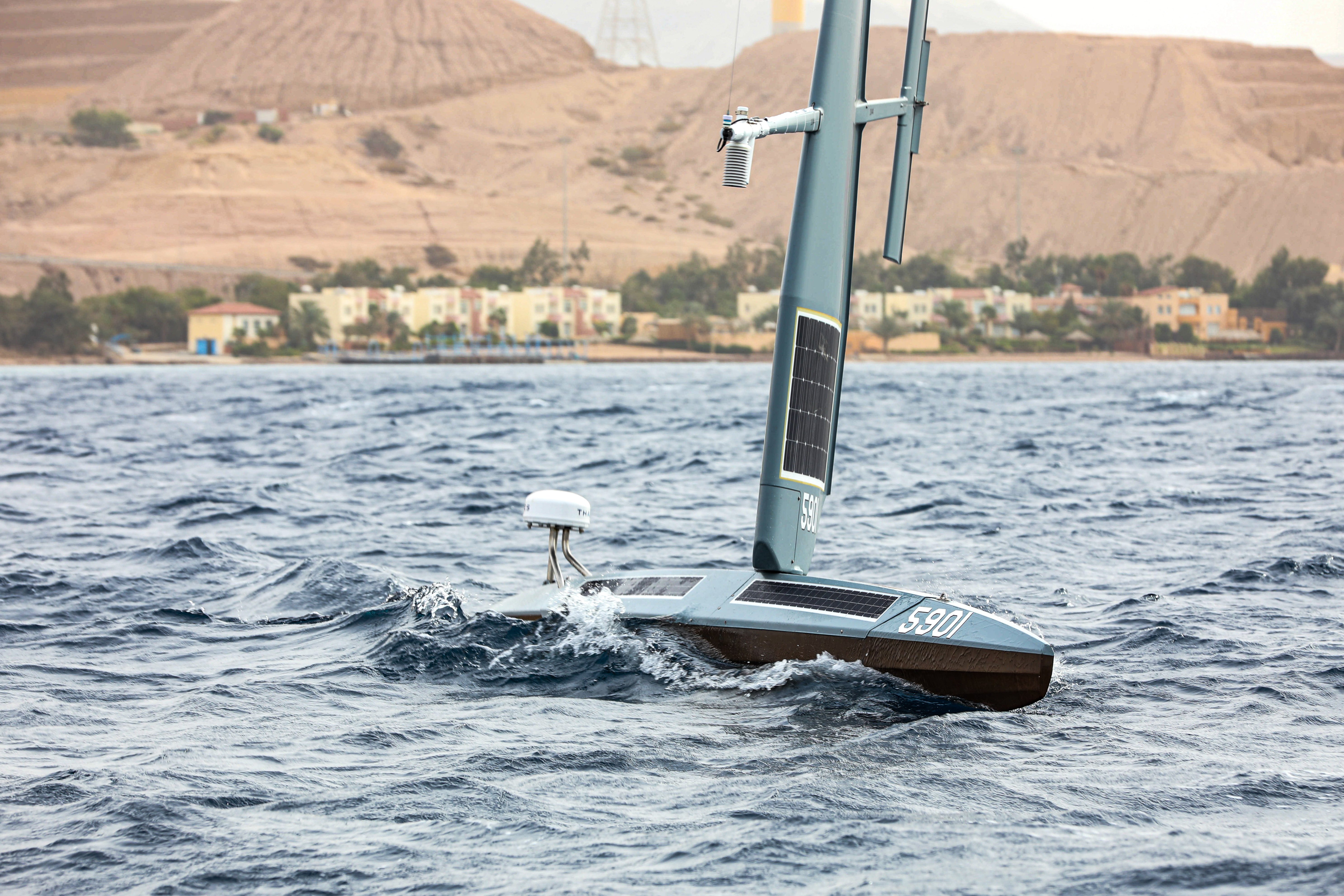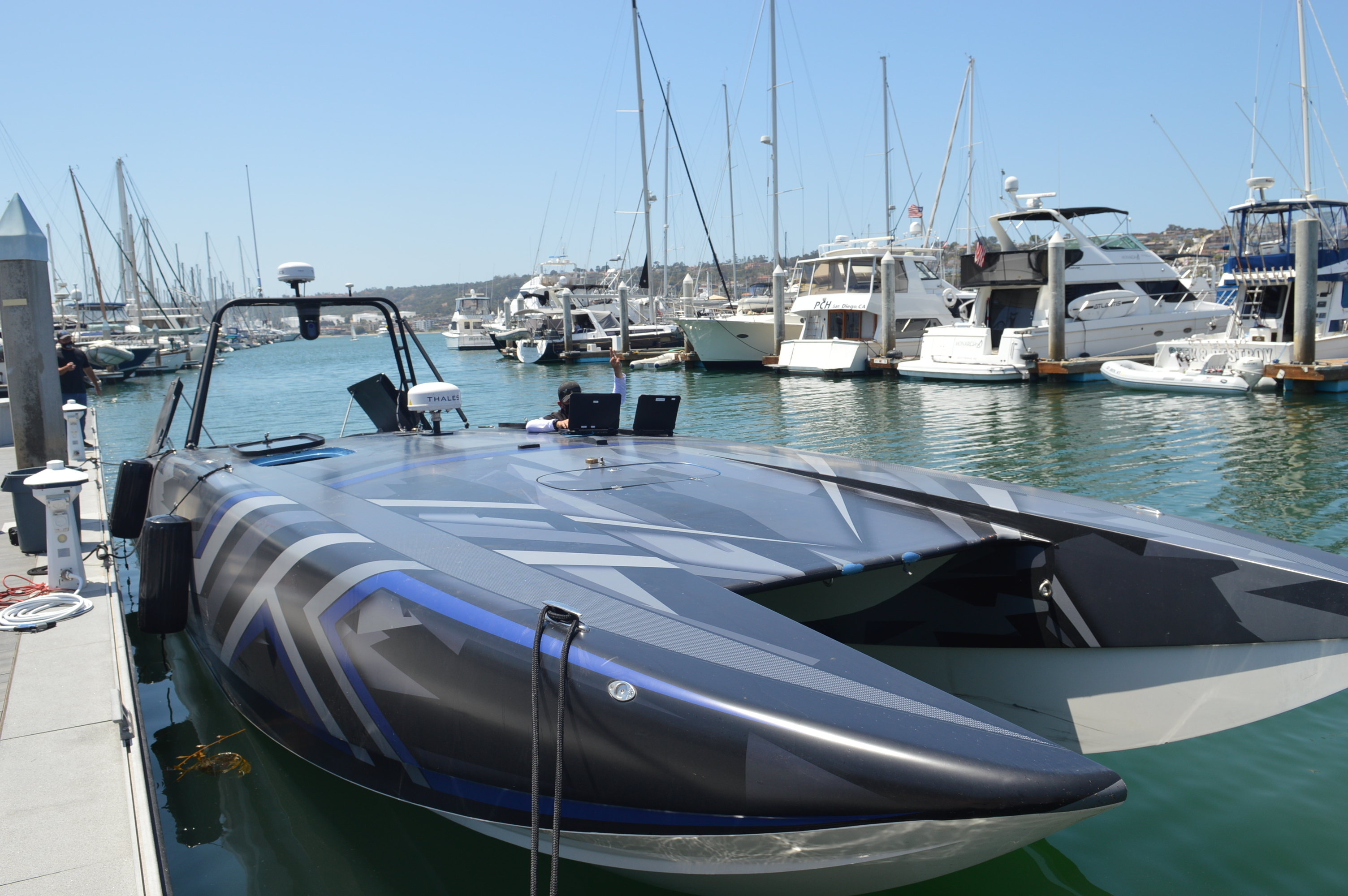
exercise Digital Horizon. US Army Photo
The Navy is rethinking its planned portfolio of unmanned surface vehicles following testing of a variety of USVs in the Middle East, the service’s top officer said on Thursday.
A year ago, the plan was to build two types of USVs: a large lightly manned or autonomous that would serve as a missile magazine for the surface fleet and a medium USV that would act as a host for sensors and other payloads smaller than vertical launch cells.
On Thursday, Chief of Naval Operations Adm. Mike Gilday said the service might be rethinking buying the MUSV after a series of exercises and experiments in U.S. 5th Fleet with Combined Task Force 59, which stood up in September.
“I don’t know if we’ll have a medium unmanned or not. The stuff that [Vice Adm. Brad] Cooper’s doing right now with CTF 59 – using small unmanned [vehicles] on the scene in the air to sense the environment … in order to yield a common operational picture for allies and partners, as well as 5th Fleet headquarters, has changed my thinking on the direction of unmanned,” Gilday said during a Thursday U.S. Naval Institute-CSIS Maritime Security Dialogue.
“We are learning so fast and fielding these capabilities out to the fleet, or potentially fielding them quickly inside the [Future Years Defense Plan], we may be able to close capability gaps with small expendable unmanned [vehicles] off of any platform,” Gilday said, “rather than thinking that we have to build, you know, a large [USV]. There may be room for that. I’m not saying that we don’t need an MUSV. I’m saying it’ll cause us to consider numbers.”
MUSV was initially imagined as a vessel that could carry a payload with the dimensions of a 40-foot shipping container, according to early requirements reviewed by USNI News in 2019.
In 2020, The Navy awarded L3 Technologies a $35 million contract for MUSVs.
At the time, the Navy was set to acquire the MUSV alongside the corvette-sized LUSV. The bigger ship would be unmanned or minimally manned and serve as an adjunct magazine to guided-missile warships, while the smaller MUSV would help build a distributed sensor network for the fleet. But China’s People’s Liberation Army is developing a growing number of anti-ship weapons that will home in on U.S. sensor networks.
Earlier this year, the Navy laid out a scenario to illustrate how the service intends to fight with the new systems.
Capt. Jason Kipp, with Program Executive Office Integrated Warfare Systems, described a guided-missile destroyer operating with large and medium USVs without transmitting from its sensors or emissions control (EMCON).
“Let’s say you have a DDG CO out there, with Medium USV under close control. That USV has maybe some embarked ISR payloads permanently installed,” Kipp suggested during an American Society of Naval Engineers Technology, Systems and Ships symposium in February.
“Traditionally, a DDG CO alone and unafraid would approach – kind of get the tactical scenario in EMCON, but at some point we’re going to have to bring up sensors, get a positive hostile ID and engage,” he said. “But now, if we’ve got a Medium USV under close control, we can set that out off-axis and do some triangulation with other things… allowing the DDG CEO to remain in complete EMCON throughout the engagement into a time of kinetic action… Now I send my MUSV off-axis, and my Large USV off a different axis. And now I can triangulate that, possibly do simultaneous on top without exposing my position, or just let the LUSV do it if my position remains unknown.”

However, the Navy might be able to get the sensor capability it wanted from MUSV through fused data from networked commercial systems to get an accurate maritime awareness picture more affordably. The 5th fleet started experimenting late last year with a 23-foot Saildrone Explorer out of Jordan and MARTAC’s Mantas T12 USV out of Bahrain. Those ongoing deployments are continuing to refine the Navy’s concepts for unmanned systems.
“Unmanned has so much potential, coupled with [artificial intelligence] software integration, that it’s difficult to put a definitive number on [the systems], and I like the way we’re going with the unmanned task force… that’s tied together acquisition specialists, requirements folks, scientists from the Navy research labs, and also the fleet with CTF 59 in terms of real-time exercising, experimenting and developing [concepts of operations],” Gilday said.
“It’s been a powerful, eye-opening, awakening experience for us.”





